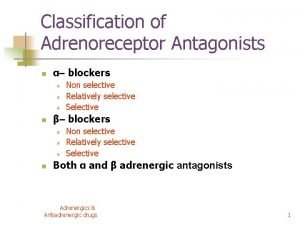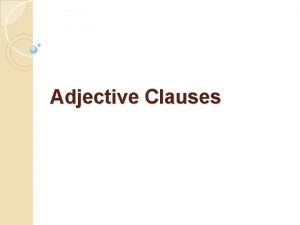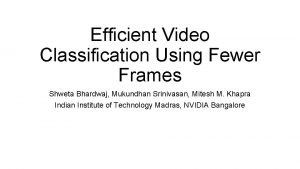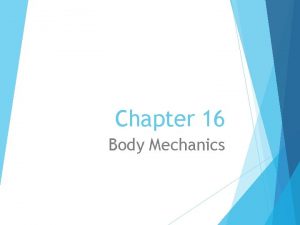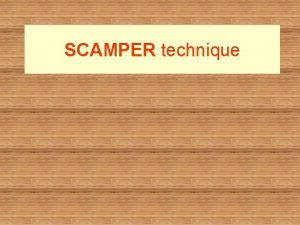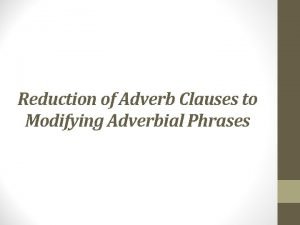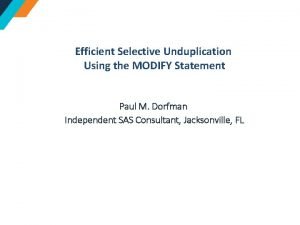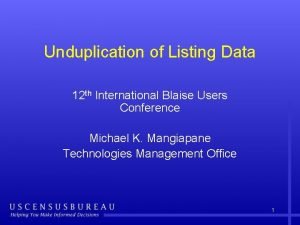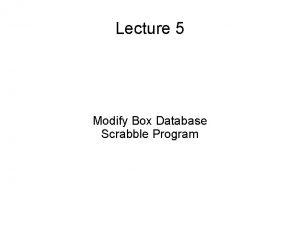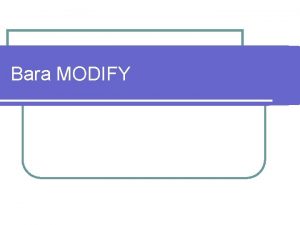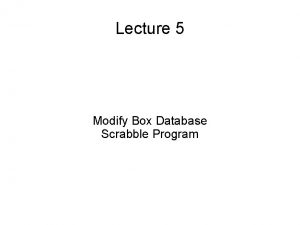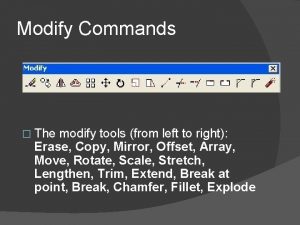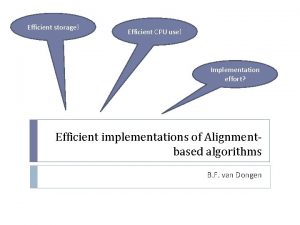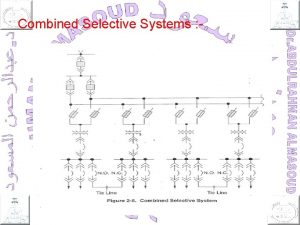Efficient Selective Unduplication Using the MODIFY Statement Paul












- Slides: 12

Efficient Selective Unduplication Using the MODIFY Statement Paul M. Dorfman Independent SAS Consultant, Jacksonville, FL

ETL Scenario /* Extract from a DW, legacy system, whatever */ proc sql ; connect to … ; create table Extract from connection to …. . . order by <what-we-need> quit ; ……… /* Somewhere downstream in the ETL */ data … ; set Extract ; by <what-we-need> ; … run ;

ETL Scenario: File Extract § The extract file is typically very large (more on that later). § It contains duplicate records for variables different from <what-we-need> key. § I. e. : Same key-values for different values of a control variable – such as date, datetime, a DW surrogate key, etc. § The duplicates/non-duplicates percentage is typically small. § We need only a single record from each duplicate-key group: For example, the record with the most recent date. § The duplicates must be eliminated before the downstream ETL step where the extract file is used. § Next slide: A miniscule “model” file TESTS.


Task Statement § Next ETL step task: • For each TEST_ID, extract N participants with the highest RESULT values, for example, N=3. • File is already ordered by (TEST_ID, descending RESULT). • So, we only need to read the file “as is” and get first N rows from each BY- group. § However! We need to unduplicate TESTS first: • Keep only the records with the most recent DATE within each (TEST_ID, PART_ID). • Otherwise, we would end up with wrong top scorers.


Standard “Sledge Hammer” Approach 1. Sort the entire file by (TEST_ID, PART_ID, DATE). Keep the record number in a variable SEQ. 2. From the result, create another, unduplicated, file by keeping only the records with LAST. PART_ID=1. 3. Re-sort the unduplicated file by SEQ to restore the original file order and drop it. 4. Feed the result to the downstream ETL step as required.

Standard Approach: The SAS Language data seq / view=seq ; set Tests ; Seq = _N_ ; run ; proc sort data=seq out=seq_sorted ; by Test_ID Part_ID Date ; run ; data Tests_nodup ; set seq_sorted ; by Test_ID Part_ID ; if last. Part_ID ; run ; proc sort data=Tests_nodup out=Tests_orig_seq (drop=Seq) ; by Seq ; run ;

So, What’s the Problem? § Sorting and re-sorting is resource-intensive. § Extremely taxing with respect to the utility space (such as SORT WORK). § For ~100 M rows and ~ 50 satellite variables it can take hours on end. § An ETL may have many such data feeds that need similar cleansing. § Unduplicating in this manner can bring the ETL to a standstill. § Or, the ETL may fail to fit into the production time window. § Q: Do we REALLY have to sort the WHOLE extract file? § A: Nope.

Duplicate RID-Marking: The Concept 1. 2. 3. 4. 5. 6. Use the extract file to create view ADD_RID with a variable RID (i. e. “Record ID”) to identify the observation numbers in the original extract file. Critical: In view ADD_RID, keep only: The keys, event identifier (e. g. DATE), and RID. Drop all the satellite variables. Sort view ADD_RID into file KEY_RID by (TEST_ID, PART_ID, DATE). Read KEY_RID and use NOT LAST. test_ID condition to save the RID values of the rows to be eliminated in a file DUP_RID. Use the RID values DUP_RID in the MODIFY statement with POINT=RID to mark the rows in the original extract file TESTS for deletion. Now file TESTS can be read by the next ETL step directly: The rows marked for deletion (i. e. the unneeded duplicates) will be automatically skipped.

Duplicate RID-Marking: SAS Code data ADD_RID / view=ADD_RID ; set TESTS (keep=Test_ID Part_ID Date) ; RID = _N_ ; Run ; proc sort data=ADD_RID out=KEY_RID ; by Test_ID Part_ID Date ; run ; data DUP_RID (keep=RID) ; set KEY_RID ; by Test_ID Part_ID ; if NOT last. Part_ID ; run ; data TESTS ; set DUP_RID ; MODIFY TESTS POINT=RID ; REMOVE ; run ;

Real-World Difference SETUP §An ETL with 5 extracts from different DW systems. §A few process-keys and ~50 satellite variables with total length ~500 bytes. §Number of records in the extracts varied from 50 to 80 million. §The duplicates comprised ~10 percent of the total number of records. STANDARD UNDUPLICAITON APPROACH § 1. 5 -2 hours of run time to unduplicate each data stream. § 8 -10 extra hours of ETL run time. MODIFY DUPLICATE-MARKING APPROACH §The unduplication run time reduced to 3 -5 minutes apiece. §No more problems with either SORTWORK or WORK. §The ETL process fit into the production window - with hours to spare.
 Alpha-adrenergic antagonist
Alpha-adrenergic antagonist Productively efficient vs allocatively efficient
Productively efficient vs allocatively efficient Allocative efficiency
Allocative efficiency Productively efficient vs allocatively efficient
Productively efficient vs allocatively efficient Allocative efficiency vs productive efficiency
Allocative efficiency vs productive efficiency Productively efficient vs allocatively efficient
Productively efficient vs allocatively efficient I thanked the woman. she helped me
I thanked the woman. she helped me Efficient video classification using fewer frames
Efficient video classification using fewer frames Using the body in an efficient and careful way
Using the body in an efficient and careful way Scamper technique
Scamper technique Reduced adverb clause
Reduced adverb clause Modifiers of human acts tagalog
Modifiers of human acts tagalog In a hurricane the eye wall represents
In a hurricane the eye wall represents
